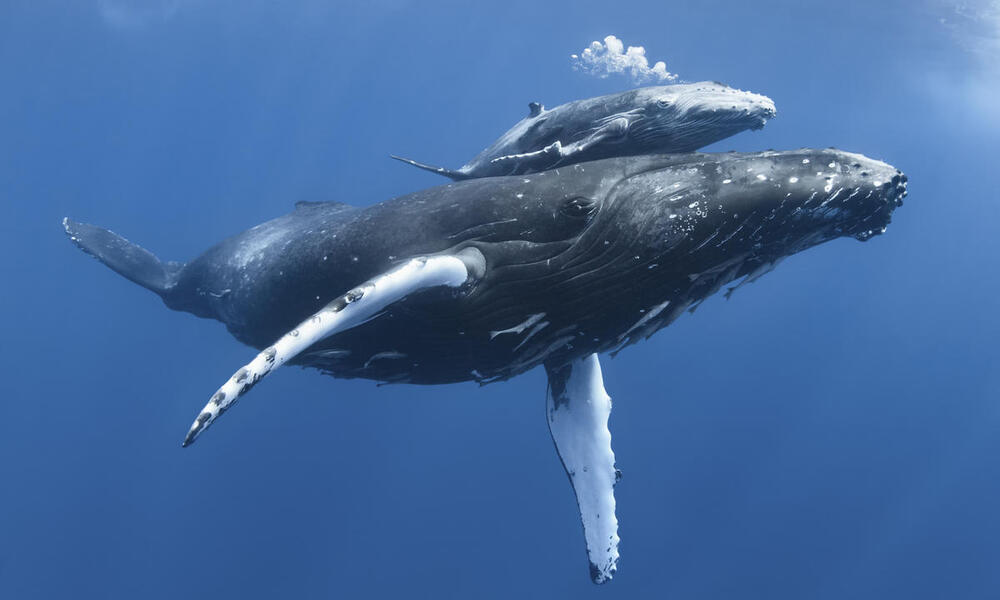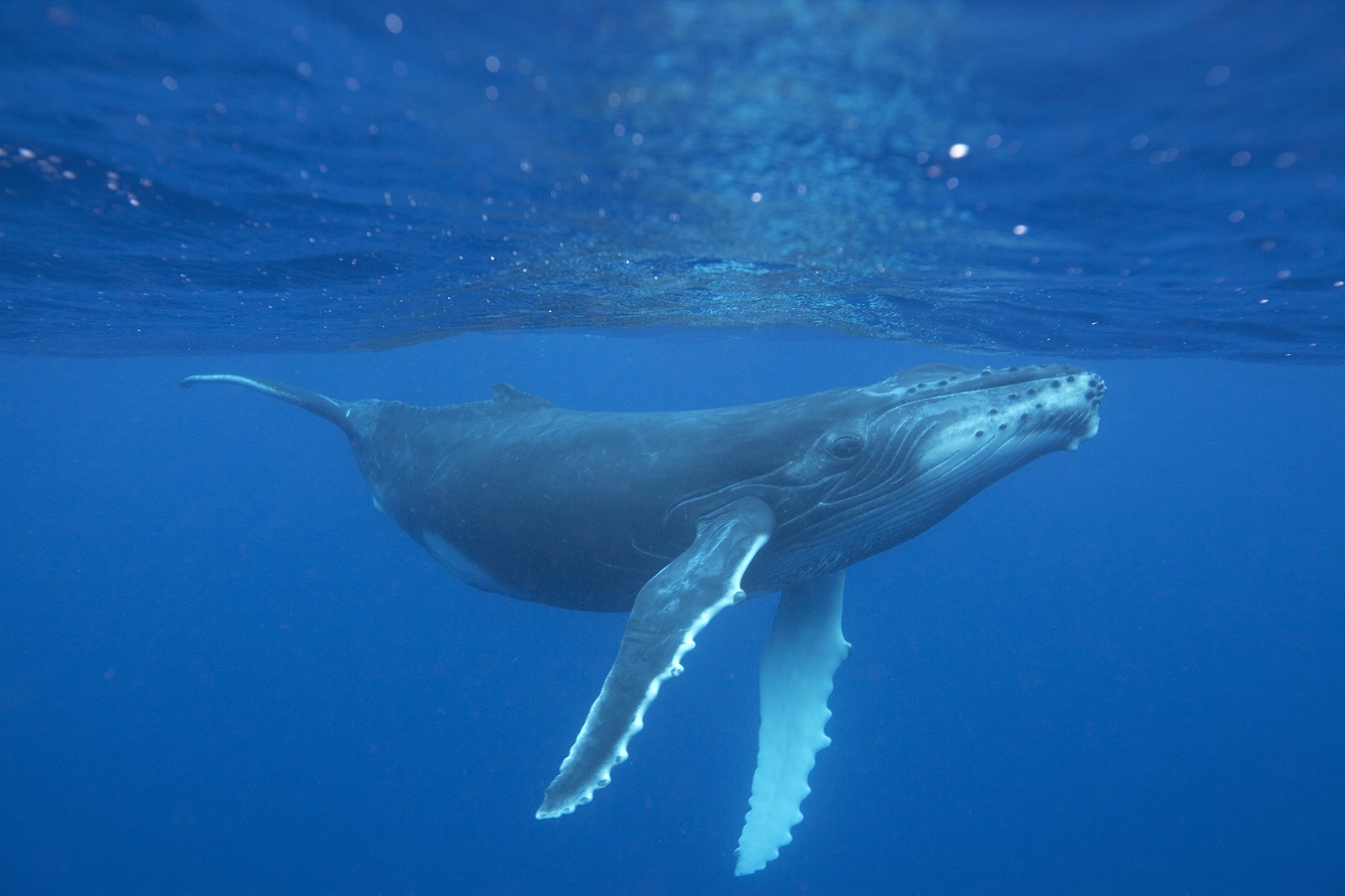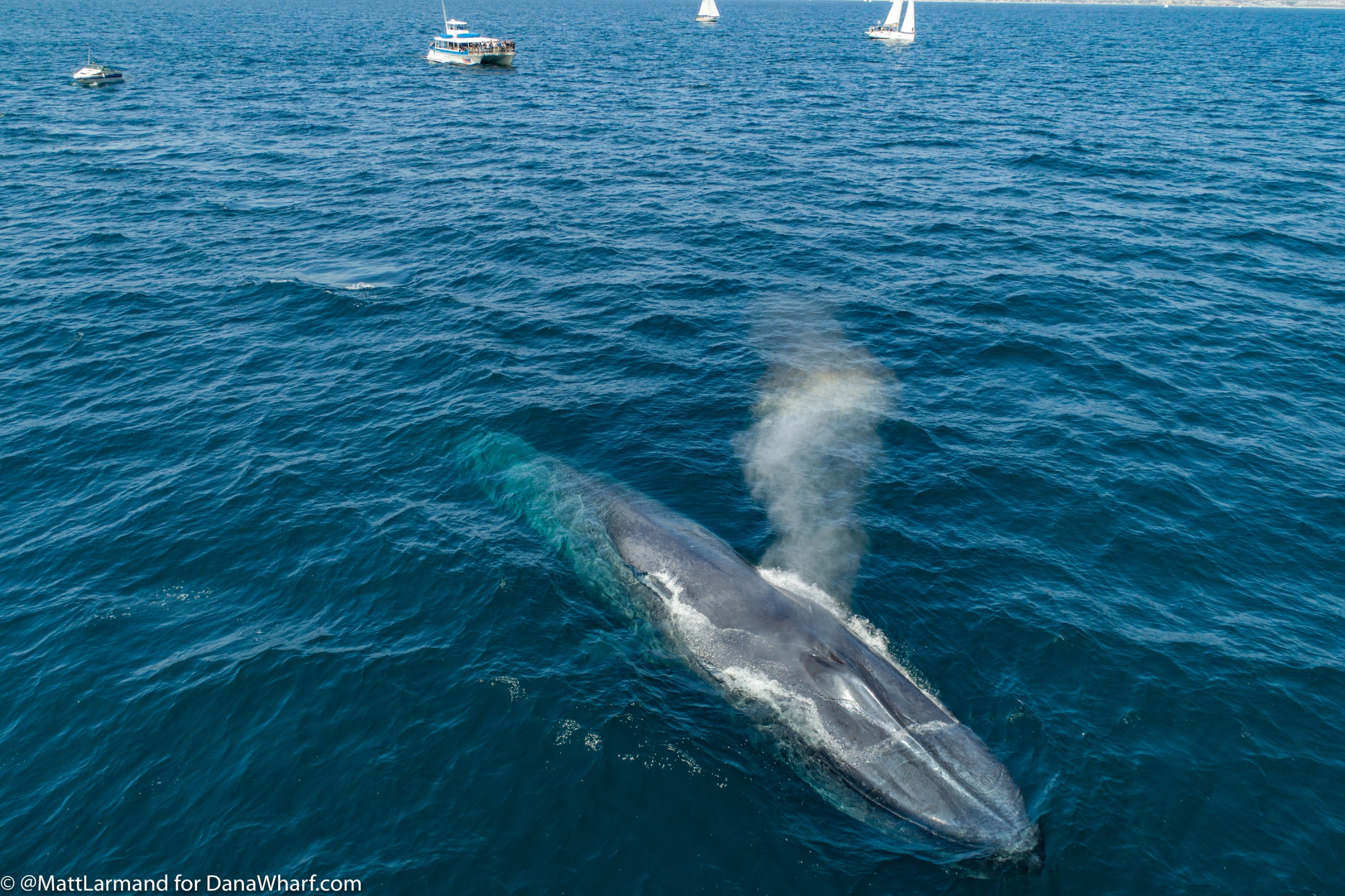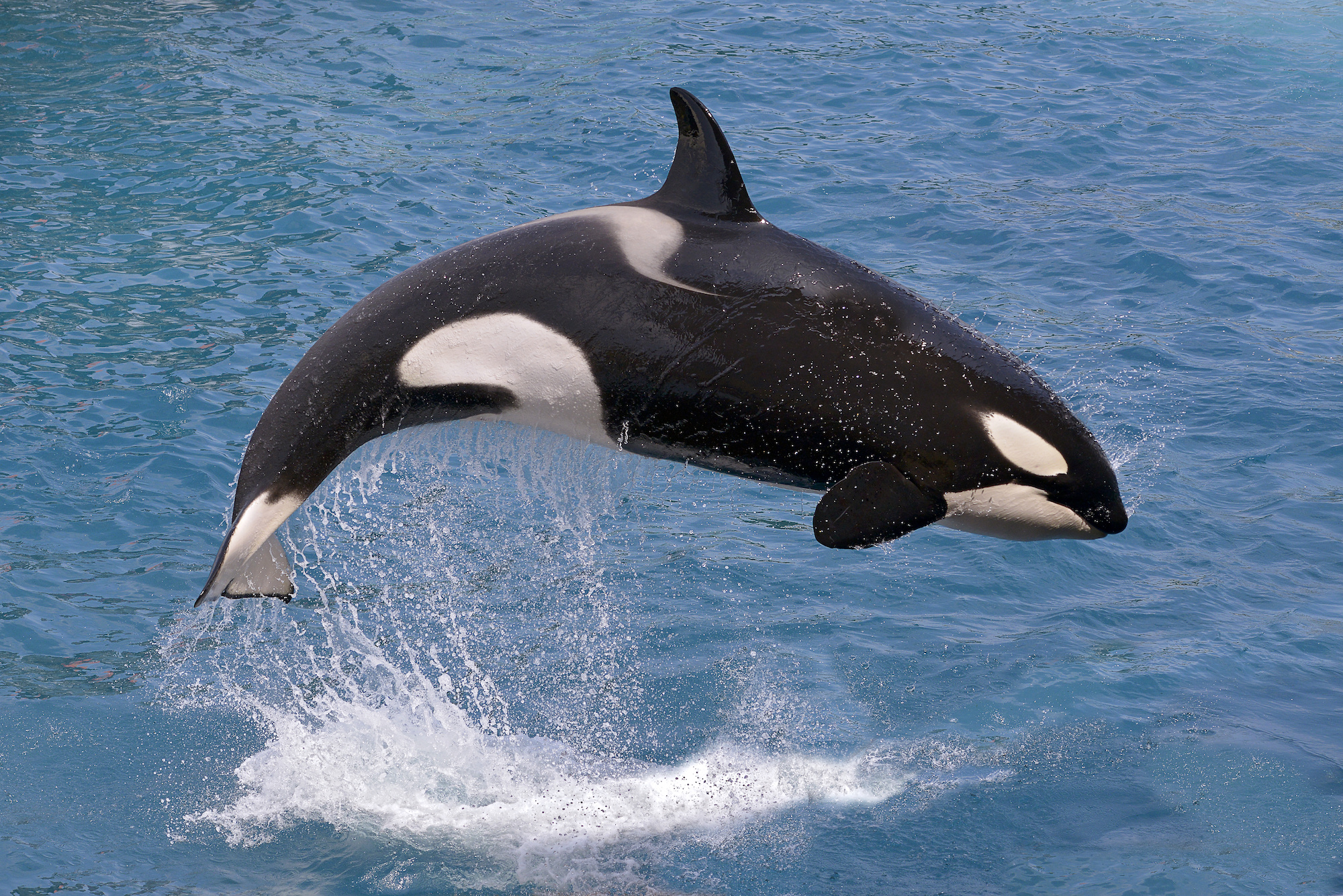Whales are the giants of the ocean. These amazing creatures live in seas and oceans all around the world. Some travel thousands of miles every year. They are mammals, just like humans, and they breathe air through blowholes on top of their heads. Whales come in many shapes and sizes. Some are playful and social, while others are quiet and mysterious. They feed on tiny shrimp-like animals called krill or small fish. Whales help keep the ocean healthy by moving nutrients around. They can dive deep and stay underwater for a long time. Some whales sing songs that travel for miles.
Their sounds help them talk to each other. Whales have fascinated people for centuries. But do you know which whale is the largest in the world? It's bigger than any dinosaur that ever lived. In this article, we'll take a look at the biggest whales and what makes them so special.
List of the Largest Whales in the World
The world's oceans are home to giants, with the largest animals ever to have lived being among the whale species. Below is a tabulated list of the 10 largest whales in the world:
| Rank | Common Name | Scientific Name | Average Maximum Length | Average Maximum Weight |
| 1 | Blue Whale | Balaenoptera musculus | 27–30 m (88–98 ft) | 150–180 tonnes |
| 2 | Fin Whale | Balaenoptera physalus | 20–25 m (66–82 ft) | 40–80 tonnes |
| 3 | Sperm Whale | Physeter macrocephalus | 16–20 m (52–67 ft) | 35–57 tonnes |
| 4 | Bowhead Whale | Balaena mysticetus | 14–18 m (46–59 ft) | 75–100 tonnes |
| 5 | Sei Whale | Balaenoptera borealis | 15–18 m (49–59 ft) | 20–45 tonnes |
| 6 | Humpback Whale | Megaptera novaeangliae | 12–16 m (39–52 ft) | 25–40 tonnes |
| 7 | Gray Whale | Eschrichtius robustus | 13–15 m (43–49 ft) | 20–40 tonnes |
| 8 | Right Whale (All Species) | Eubalaena spp. | 13–18 m (43–59 ft) | 36–70 tonnes |
| 9 | Bryde's Whale | Balaenoptera brydei | 12–14 m (39–46 ft) | 13–25 tonnes |
| 10 | Minke Whale | Balaenoptera acutorostrata | 7–10 m (23–33 ft) | 5–10 tonnes |
1. Blue Whale

The Blue Whale is the largest animal known to have ever existed, characterised by its long, slender, mottled blue-grey body and a tiny, stubby dorsal fin. It is a filter feeder, with its diet consisting almost exclusively of krill, small shrimp-like crustaceans, consuming up to 3,600 kg (7,900 lbs) a day during peak feeding season.
These whales are found in all the world's major oceans, from polar to tropical waters, undertaking long migrations between cold feeding grounds in summer and warmer breeding grounds in winter.
A lesser-known fact is that its heart is the size of a small car, and its calls are the loudest sounds made by any animal on Earth, potentially audible to other blue whales over distances of up to 1,600 km (1,000 miles).
2. Fin Whale

Often nicknamed the "greyhound of the sea" due to its streamlined, slender body and impressive speed, the Fin Whale is the second-largest whale species. Its body is brownish-grey with a paler underside, but it possesses a unique asymmetrical colouration: the right side of its lower jaw and baleen is white or light grey, while the left side is dark.
Fin Whales feed primarily on small schooling fish, squid, and crustaceans like krill and copepods. They are found across all major oceans, preferring temperate and calm waters, though they are absent from the extreme polar ice and very shallow coastal areas.
An interesting fact is that their low-frequency vocalisations travel huge distances and are believed to be used both for communication and for sonar navigation in the deep ocean.
3. Sperm Whale

The Sperm Whale is the largest of the toothed whales, instantly recognisable by its massive, block-shaped head, which can account for up to one-third of its total body length. Its skin is dark, charcoal grey and often appears wrinkly.
They primarily prey on deep-sea species, with giant and colossal squid being a favoured food, though they also eat fish and skates. Sperm Whales have the broadest global distribution of any marine mammal, inhabiting all deep oceans from the equator to the edge of the pack ice.
Their unique head contains the spermaceti organ, a cavity filled with a waxy substance called spermaceti. Scientists believe this aids in buoyancy control and focuses their powerful echolocation clicks, making their brain the largest of any animal on Earth.
4. Bowhead Whale

The Bowhead Whale is an Arctic specialist, spending its entire life in the cold, ice-covered waters of the Arctic and subarctic.
Its name comes from its distinctively large, bow-shaped head, which is capable of breaking through sea ice up to 18 cm (8 inches) thick to breathe. Bowheads are baleen whales and feed mainly on small organisms like copepods and krill by swimming slowly with their mouth open.
They are the longest-lived mammals on Earth, with some individuals estimated to have lived for over 200 years. Another interesting characteristic is that they lack a dorsal fin, a feature thought to be an adaptation for navigating under the ice.
5. Sei Whale

The Sei Whale is a fast, sleek baleen whale, known as one of the quickest of the rorquals, capable of bursts of speed up to 30 mph. It has a dark bluish-grey to black slender body with a long, curved dorsal fin.
Its diet primarily consists of minute organisms, including copepods and krill, which they filter feed on, as well as small schooling fish. Sei Whales are found worldwide in all major oceans, generally in deep offshore waters of subtropical and subpolar regions, tending to avoid the polar ice and the tropics.
A lesser-known fact is that their feeding style involves "skimming", where they swim near the surface with their mouth open to continuously filter prey, or "lunging" through dense patches of food.
6. Humpback Whale

Instantly recognisable by their long pectoral fins—which can be up to one-third of their body length—the Humpback Whale has a robust body that is primarily black, often with white markings on the belly and flukes.
They are famous for their acrobatic breaches and their complex "songs" sung by males. Humpbacks are generalist feeders, consuming krill and various small schooling fish (like herring and capelin), often using a highly coordinated "bubble-net feeding" technique.
They have a global distribution, migrating thousands of miles between cold-water feeding grounds in summer and warm, tropical breeding grounds in winter. The unique pattern on the underside of their tail flukes serves as a distinct "fingerprint" used by scientists for individual identification.
7. Gray Whale

The Gray Whale is known for having one of the longest annual migrations of any mammal, travelling up to 20,000 km (12,500 miles) round trip. Its slate-grey body is often covered in white, orange, and gray patches from barnacles and whale lice, giving it a mottled appearance.
Gray Whales are unique among baleen whales because they are primarily bottom feeders, rolling onto their sides to scoop up sediment from the seabed to filter out small benthic invertebrates (like amphipods). They are predominantly found in the coastal waters of the North Pacific.
A surprising fact is that their feeding leaves behind distinct oblong "feeding pits" on the ocean floor, visible from above. The eastern North Pacific population has recovered significantly from whaling and has even been removed from the US endangered species list.
What Was The Biggest Whale To Ever Exist?
The biggest whale, and the largest animal known to have ever existed on Earth, is the Blue Whale (Balaenoptera musculus). This marine giant exceeds the size of even the largest known dinosaurs, with a length of up to 30 metres (98 feet) and a weight of up to 180 metric tonnes.
What Is The Biggest Whale Ever Caught In The World?

The biggest whale ever caught was a female Blue Whale, harpooned in the Southern Ocean (Antarctica) on March 20, 1947. This record-holder measured 27.6 metres (91 feet) long and was recorded as weighing 190 metric tonnes (418,878 pounds).
While longer blue whales have been observed (up to 33 metres), this particular specimen holds the record for the heaviest accurately weighed animal ever captured, highlighting the incredible scale of these marine mammals.
Why Are Orcas Called Killer Whales?
Orcas are called "Killer Whales" due to their historical reputation as powerful predators of large marine animals. The name originated with ancient sailors who witnessed orcas hunting and preying on larger whale species.
They originally called them "whale killers", which was later shortened and flipped into the now-common name "Killer Whale." Despite their fearsome name, Orcas are the largest species of dolphin and have no documented cases of killing humans in the wild.
Do Blue Whales Have Any Predators?

Blue Whales have only one known natural predator: the Orca (Killer Whale). Due to their immense size and speed, full-grown Blue Whales are rarely attacked. However, orca pods will occasionally coordinate to hunt juvenile or weakened adult Blue Whales.
Historically, the most significant threat and most effective predator of the Blue Whale was Homo sapiens, with industrial whaling having once driven the species to the brink of extinction.
Comments
All Comments (0)
Join the conversation